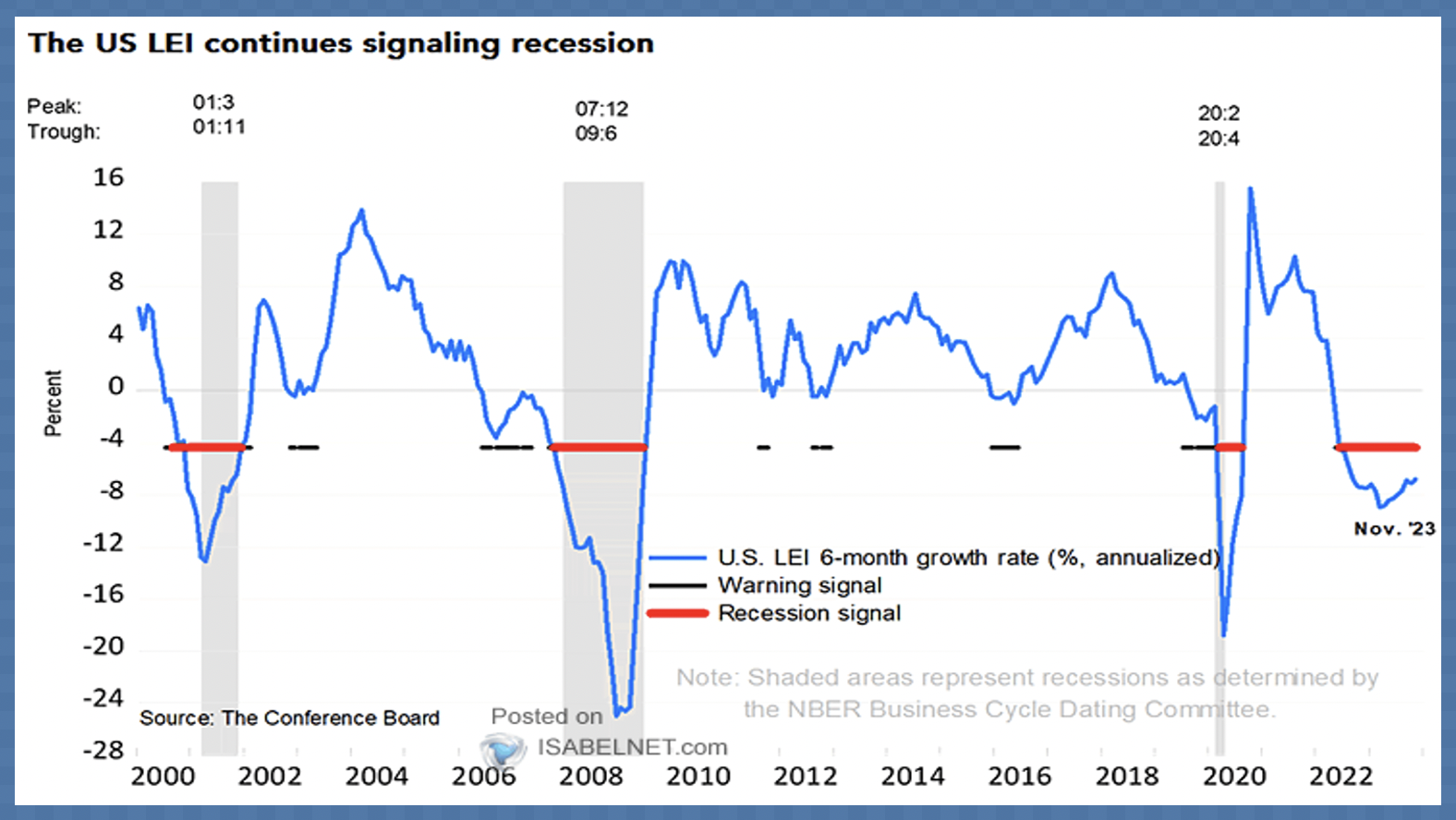There has never been an incidence in history where the US Conference Board Leading Economic Index (LEI) had a six-month average growth rate sub -4.5%, and the US economy did not enter an NBER-defined recession.
The six-month smoothed LEI growth rate in November was -7.5% (chart below since 2000, courtesy of ISABELNET.com) and has been negative for 20 consecutive months, something only seen before the 1974 and 2008 recessions (stock markets halved and unemployment leapt during both).
(The 10 data points in the LEI are the leading credit index, S&P 500 stock prices, yield spread between the 10-year treasury and the Fed funds rate, average consumer expectations for business conditions, ISM new orders, building permits, average weekly hours worked in manufacturing, manufacturing new orders, consumer goods orders, average weekly initial jobless claims).
When we combine the sub -4.5% LEI trend with the inverted 10-year minus 3-month yield spread and falling Gross Domestic Income (GDI), the warning of incoming recession has never been louder. Yet, most are ill-prepared.
Economist Eric Basmajin does an excellent job of explaining the significance of these signals in the segment below.
Explore the reliability of the Conference Board Leading Index, a recession indicator with a flawless track record spanningic six decades. This video delves into the current -7.5% growth rate, compares it with other indicators, and challenges the optimistic narrative driven by recent stock market performance, emphasizing the importance of staying vigilant to potential economic downturns. Here is a direct video link.


